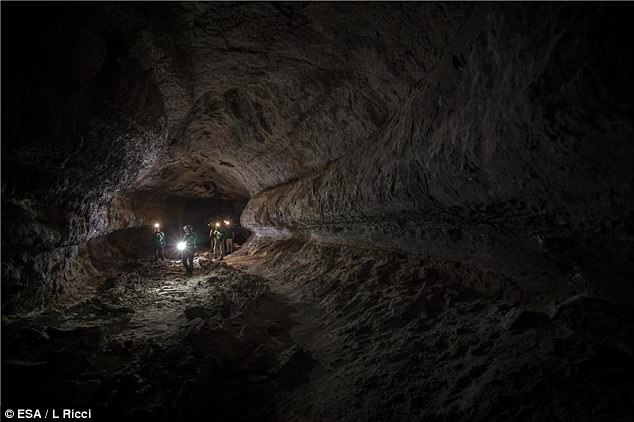A new research says that the lava tubes – underground caves created by volcanic activity – on the moon and Mars could serve as protected habitats large enough to colonize house streets or even towns.
Scientists say these gigantic caves would provide natural shelter form from cosmic radiation and meteorite strikes for astronauts who would set up colonies there in future.
Two separate teams of scientists have been working on ways to exploit these lava tubes, which can reach up to 65 km.
Lava tubes are found in many volcanic areas on Earth, including Hawaii, Iceland, North Queensland in Australia, Sicily and the Galapagos islands.

Researchers at the University of Padova and the University of Bologna compared the lava tube locations on Earth with those on the moon and Mars.
Their model shows the tunnels that are revealed by collapses or meteorite strikes.
However, a more advanced spacecraft, could penetrate the surface using radar to find the location of previously hidden lava tube channels.
A comparison of both the findings showed that gravity has a big effect on the size of lava tubes.
"On Earth, they can be up to thirty metres across. In the lower gravity environment of Mars, we see evidence for lava tubes that are 250 metres in width," Pozzobon said.
On the Moon, these tunnels could be a kilometre or more across and many hundreds of kilometres in length," he said.
Lava tubes can form in two ways: 'overcrusted' tubes form when low-viscosity lava flows fairly close to the surface, developing a hard crust that thickens to create a roof above the moving lava stream.
When the eruptions end, the conduit is drained leaving a tunnel a few metres beneath the surface.
'Inflated' tubes are complex and deep structures that form when lava is injected into existing fissures between layers of rock or cavities from previous flows.
The lava expands and leaves a huge network of connected galleries as it forces its way to the surface.
Recently a NASA mission provided detailed gravity data for the Moon that suggested the presence of enormous subsurface voids related to lava tubes.
The results have important implications for habitability and human exploration of the Moon but also for the search of extraterrestrial life on Mars.
Lava tubes are environments shielded from cosmic radiation and protected from micrometeorites flux, potentially providing safe habitats for future human missions.
They are also potentially large enough for significant human settlements, Pozzobon said.
